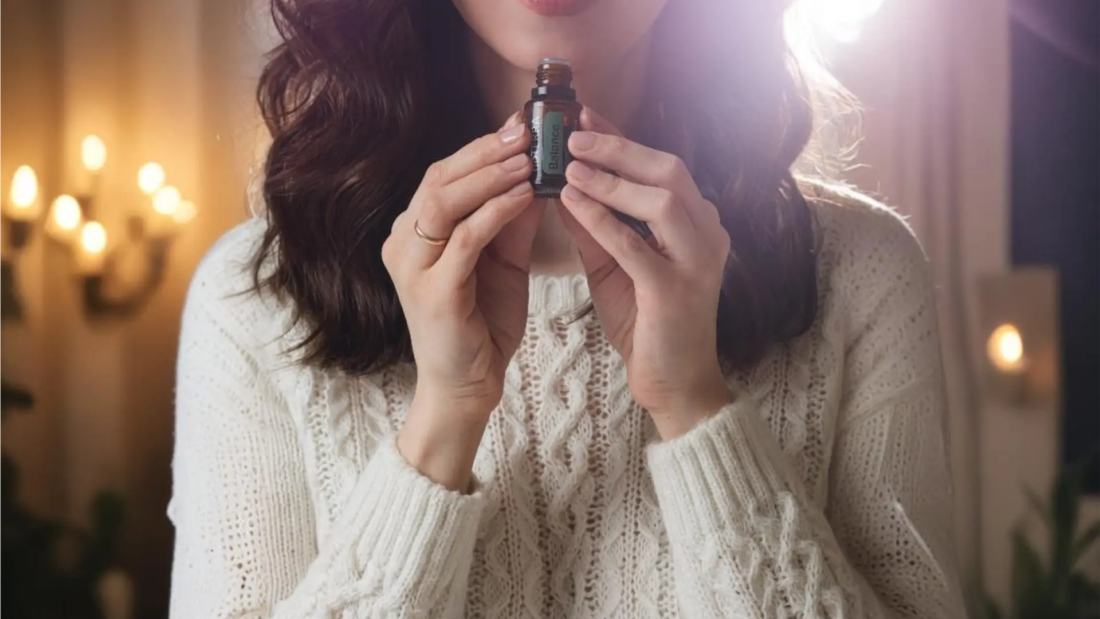Discover the psychological impact of smell loss and how it affects daily life and mental health. Uncover insights and strategies for coping effectively.
How to Speed Up Covid Smell Recovery
Unlock your sense of smell with targeted Covid smell recovery techniques
Imagine biting into your favourite meal only to taste… nothing. This became a harsh reality for millions during the COVID-19 pandemic. Loss of smell, or anosmia, turned out to be one of COVID’s most frustrating symptoms. In 2021 alone, about 20 million Americans lost their sense of taste or smell from COVID-19, with roughly 5 million still struggling with partial or complete loss.
Here’s some encouraging news though: research shows that 88.2% of people with COVID-related smell loss get it back completely within two years. If you’re dealing with this right now, let me walk you through some proven ways to potentially speed up your recovery.
COVID-19 and Its Impact on Olfactory Functions
The way COVID-19 affects our sense of smell is pretty interesting. Instead of attacking our smell receptors directly, the virus goes after the support cells around our olfactory neurons. This triggers inflammation and messes with how smell signals travel to our brain.
Recent studies paint an interesting picture of recovery patterns. About 72.2% of people fully get their smell back, 24.1% partially recover, and 3.7% face longer-term issues or no recovery. Interestingly, women tend to have a harder time recovering their sense of smell compared to men.
How severe your initial COVID symptoms are seems to play a big role in recovery time. People with more intense symptoms or bad nasal congestion usually take longer to recover. But there’s good news about newer variants – the Omicron strain is less likely to cause smell loss compared to earlier versions of the virus.
Understanding this helps explain why some people bounce back quickly while others need more time and help. The really encouraging part? Research shows that 95.7% of people get their sense of smell back within 180 days, which offers hope if you’re currently going through this.
COVID-19
The way COVID-19 affects our sense of smell has become one of its most notable features. While researchers initially focused on breathing problems, they’ve since realized just how significant smell loss is for both doctors and patients. Studies show about 60.5% of people with COVID-19 lose their sense of smell, making it a common but challenging symptom to deal with.
Step-by-Step Guide
1. Start Smell Training Early
- Jump in as soon as you notice smell loss
- Pick four distinct scents (think lemon, rose, clove, eucalyptus)
- Spend 20 seconds smelling each one, twice a day
- Track your progress in a journal
2. Practice Nasal Hygiene
- Rinse your nose with saline twice daily
- Keep your nasal passages from drying out
- Skip harsh nasal sprays unless your doctor says otherwise
- Try gentle steam inhalation
3. Support Your Body’s Recovery
- Get enough zinc through food or supplements
- Eat foods rich in omega-3s
- Drink plenty of water – at least 8 glasses daily
- Make sure you’re getting good sleep (7-9 hours)
4. Try Mindful Breathing Exercises
- Focus on slow, deep breaths through your nose
- Give alternate nostril breathing a shot
- Include some gentle yoga poses that encourage deep breathing
- Set aside 10-15 minutes daily for breathing exercises
Keep in mind that everyone recovers at their own pace. While some people get their smell back in weeks, others might need several months. The key is sticking with these practices and being patient. If you’re not seeing any improvement after two weeks of consistent effort, it might be worth checking in with an ENT specialist for personalised advice.
Staying motivated can be tough when progress is slow. Set realistic expectations – research shows that 10.9% of people don’t recover until after 6 months. This doesn’t mean all hope is lost; it just means you need to stay committed to your recovery routine.
Managing Conditions Related to Loss of Smell
When you’re dealing with smell loss, it gets more complicated if you have other underlying conditions. While COVID-19 can trigger smell loss on its own, things like nasal polyps or sinusitis can make recovery trickier. That’s why it’s important to identify and address these conditions as part of your recovery plan.
If you’re looking for treatment, doctors usually take a comprehensive approach. They’ll start with a thorough check of your nasal passages to spot any inflammation, polyps, or signs of chronic sinusitis that might need special attention.
One of the most helpful treatments we’ve seen is glucocorticoid nasal sprays, which help bring down inflammation in your nose. These have shown great results, especially when used alongside other treatments. Just remember – these sprays should only be used under a doctor’s guidance since long-term steroid use can have side effects.
Nasal irrigation has also proven to be really valuable. Using a simple saline solution to flush your nasal passages can:
- Clear out irritants and excess mucus
- Reduce inflammation naturally
- Keep your nasal passages healthy
- Help your smell-sensing tissue heal
If you’re dealing with ongoing issues, you might need to check in regularly with an ENT specialist. They can keep track of your progress and adjust your treatment if what you’re doing isn’t working well enough. Some people might need stronger treatments, like oral steroids, or even minor surgery if there are structural issues to address.
Remember, managing these conditions isn’t just about medical treatments. Your environment plays a big role too. Simple things like keeping proper humidity levels at home, staying away from things that irritate your nose, and using clean air filters can really help your recovery along. These basic steps, combined with proper medical care, can create the best conditions for getting your sense of smell back.
Real-life Stories: Recovery Journeys from COVID-19 Related Loss of Smell
Everyone’s journey to recovering their sense of smell after COVID is different. Take Sarah, a 34-year-old chef who lost her smell in early 2021. At first, she was devastated – it affected both her personal life and her career. She spent six months working on her recovery, using smell training and getting professional help. Eventually, she got back to distinguishing complex flavors, though she says the experience changed how she thinks about food forever.
Then there’s Mark, a wine enthusiast who really struggled with losing his sense of smell. It wasn’t just his hobby that took a hit – it affected his social life and emotional well-being too. After four months of dedicated smell training and working with an ENT specialist, he started noticing subtle improvements. These days, he’s back to enjoying his wine collection, though he admits some of the more subtle aromas still escape him.
Linda’s story is particularly interesting – she’s a florist who relied heavily on her sense of smell for work. Her recovery took almost eight months, and she went through periods where smells seemed distorted (that’s called parosmia). Through consistent smell training exercises and support from her medical team, she gradually rebuilt her ability to recognize different scents. Her experience shows just how important it is to stay patient and keep at it.
These stories share some common threads that might help others:
- Consistency is key with smell training exercises
- Getting professional help makes a real difference
- Having support from family and friends helps a lot
- Setting realistic expectations helps manage frustration
- Keeping track of progress can help stay motivated
James, a 45-year-old teacher, talks about how losing his sense of smell affected him mentally. His seven-month recovery journey taught him to appreciate even the smallest signs of improvement. He credits his success to a mix of medical guidance, smell training, and staying positive despite setbacks.
Each of these stories backs up what research has found – while recovery times vary quite a bit, sticking with recommended treatments and exercises usually leads to good results. Their experiences also show how much emotional strength you need during recovery and why it’s important to celebrate small wins along the way.
COVID-induced Loss of Smell
When we look at how COVID affects our sense of smell, it’s pretty unique. Unlike other viruses that directly damage smell receptors, COVID-19 mainly affects the helper cells around our smell neurons. This explains why some people recover quickly while others need more time.
To understand why COVID makes you lose your smell and taste, we need to look at how the virus interacts with our senses. It targets specific receptors (called ACE2) that are common in cells supporting our smell neurons. When these support cells get inflamed or damaged, they disrupt how our smell receptors work, even though the receptors themselves are usually fine.
Can COVID-19 Cause Permanent Loss of Smell and Taste?
A lot of people worry about whether they’ll get their sense of smell back. The research is actually pretty encouraging: about 88.2% of people recover within two years. But recovery isn’t always straightforward.
Here’s what the numbers tell us:
- Most people (72.2%) get their smell back completely
- About 24.1% get it back partially
- Only 3.7% don’t recover at all
- Women might take longer to recover than men
While permanent loss is possible, it’s pretty rare. Our smell neurons are actually really good at regenerating themselves. Even in cases that seem hopeless at first, the body often finds ways to repair these important sensory pathways.
If you’re dealing with long-term symptoms, remember that “permanent” doesn’t always mean “untreatable.” Scientists are constantly finding new ways to help people recover, and many patients see improvements even after a long time. Your chances of recovery often depend on:
- How severe your initial infection was
- Whether you have other health conditions
- Your age and overall health
- How quickly you started treatment
Doctors emphasize that patience is really important during recovery. Some people might get their smell back in weeks, while others need months to see significant improvement. Regular check-ins with healthcare providers and consistent smell training exercises can help optimize your chances of recovery, even in tough cases.
COVID-19 and Its Impact on Olfactory Functions
Loss of smell from COVID-19 has affected millions of people worldwide, with about 60.5% of COVID patients experiencing it. This widespread impact has led researchers to take a closer look at how the virus affects our ability to smell.
What’s fascinating is how the virus works – instead of attacking smell receptors directly, it goes after the cells that support them. This triggers inflammation and disrupts how smell signals get to our brain. Interestingly, newer variants like Omicron don’t seem to cause smell loss as often as earlier versions did, suggesting the virus is changing how it affects our senses.
The recovery patterns are encouraging. About 88.2% of people get their smell back within 2 years, and even better, 95.7% recover within 180 days. However, everyone’s experience is different.
Several things affect how likely you are to recover:
- Gender plays a role – women typically have a harder time recovering than men
- How severe your initial symptoms were matters – worse symptoms usually mean longer recovery
- Timing varies – about 10.9% of people don’t recover until after 6 months
In the United States alone, about 20 million people lost their sense of taste or smell from COVID-19 in 2021. While most recovered, around 5 million had partial or no recovery, showing why it’s so important to understand and treat this symptom effectively.



